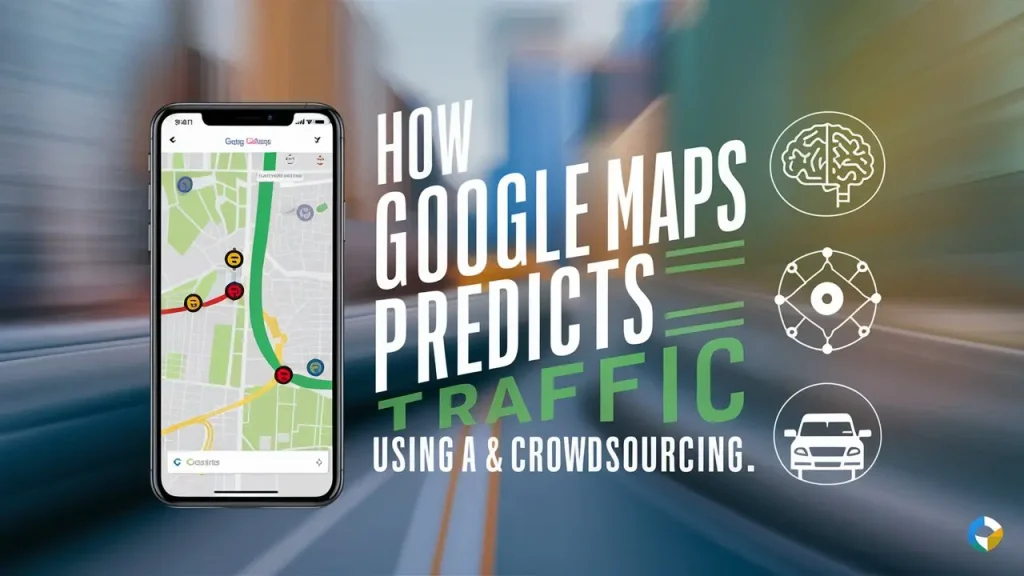Imagine navigating a city with real-time 3D views of your entire route, knowing exactly what to expect around every corner. Google Maps AI features have taken a quantum leap, integrating powerful technology to transform your travel experience. From predicting traffic to suggesting alternate routes, Google Maps is redefining navigation with cutting-edge AI technology and innovative features.
The Role of AI in Google Maps:
Artificial Intelligence (AI) has revolutionized Google Maps, turning it into a sophisticated tool that not only helps you navigate but also makes smart recommendations based on real-time data. Google Maps AI powers features like eco-friendly routing, which helps users choose routes that save fuel or energy, and Live View, which uses augmented reality (AR) to help you find your way in unfamiliar areas. These advancements ensure that Google Maps is more than just a map; it’s a personalized guide always ready to assist you.
Crowdsourcing: The Backbone of Traffic Predictions:
Have you ever wondered how Google Maps accurately tells you about traffic and provides alternate routes to your destination? It’s all thanks to a simple process called crowdsourcing. Crowdsourcing traffic data involves gathering information from a large group of people to achieve a specific goal—in this case, predicting traffic.
When you turn on Google Maps, it asks you to enable GPS. Whether you’re actively using the app to navigate or simply have your GPS turned on, Google collects this data from all users in a specific area. By analyzing the movement and location data of millions of users, Google Maps traffic predictions can determine conditions on different routes. If one route is congested, it suggests an alternate, faster route, ensuring you reach your destination as efficiently as possible.
Immersive View for Routes:
One of the most exciting updates in Google Maps is the Immersive View for Routes feature. This AI-powered tool allows you to preview your entire journey in stunning 3D before you even start moving. Imagine planning a bike ride in San Francisco and being able to see every twist and turn along the route in a detailed, multi-dimensional view. This feature not only shows you the route but also overlays simulated weather and traffic conditions, helping you decide the best time to start your journey. Whether you’re driving, walking, or cycling, Immersive View provides visual turn-by-turn directions, making navigation more intuitive and engaging.
Lens in Maps Live View:
Another game-changer is the Lens in Maps feature, previously known as Search with Live View. This AI-powered tool uses your phone’s camera to identify and label your surroundings in real time. Just lift your phone and point it around, and you’ll see markers for ATMs, restaurants, transit stations, and more. This feature is incredibly helpful when you’re in a new city or trying to find your way out of a subway station. It’s like having augmented reality glasses right on your smartphone.
Enhanced Navigation Features:
Google Maps has also enhanced its navigation features to provide a more detailed and accurate representation of the real world. Buildings along your route are now more accurately depicted, helping you better orient yourself in unfamiliar cities. The app also offers improved lane details, making it easier to navigate tricky highway exits. For users in the U.S., there’s HOV lane information, and in Europe, Google Maps AI-powered speed limit information is expanding to 20 countries. These updates ensure that drivers can navigate with confidence and avoid common pitfalls on the road.
EV Charging Station Information:
For electric vehicle (EV) drivers, Google Maps has made significant improvements to alleviate charging anxiety. The app now provides detailed information about nearby charging stations, including compatibility with your vehicle and the speed of available chargers. You can also see when a charger was last used, helping you avoid stations that might be out of service. This feature is a big time-saver and makes it easier for EV drivers to plan their trips without worrying about running out of power.
AI-Powered Search Enhancements:
Google Maps search enhancements have also been supercharged by AI. Now, when you search for specific things like “animal latte art” or “pumpkin patch with my dog,” you’ll get photo-first results based on an analysis of billions of photos shared by the Google Maps community. This makes it easier to find exactly what you’re looking for and discover new places based on visual cues. Thematic search results, like art exhibitions or anime, also help you find things to do in a more organized and intuitive way.
Sustainability and Eco-Friendly Routing:
One of the most impactful Google Maps AI features is eco-friendly routing. By analyzing traffic data and road conditions, Google Maps can suggest routes that minimize fuel consumption and reduce emissions. This not only helps you save money on gas but also contributes to a greener planet. As more people adopt these routes, the collective impact on the environment can be significant, making this feature a win-win for both users and the planet.
Conclusion:
Google Maps AI features continue to push the boundaries of what’s possible with continuous advancements. From immersive 3D views and real-time traffic predictions to augmented reality navigation and eco-friendly routing, Google Maps is transforming how we navigate our world. Whether you’re exploring a new city or trying to find the fastest route home, Google Maps is more than just a map—it’s your ultimate travel companion.
So, next time you open Google Maps, take a moment to appreciate the incredible technology at work, guiding you through your journey. And don’t forget to share your experiences and thoughts on how Google Maps AI features have changed the way you travel!




